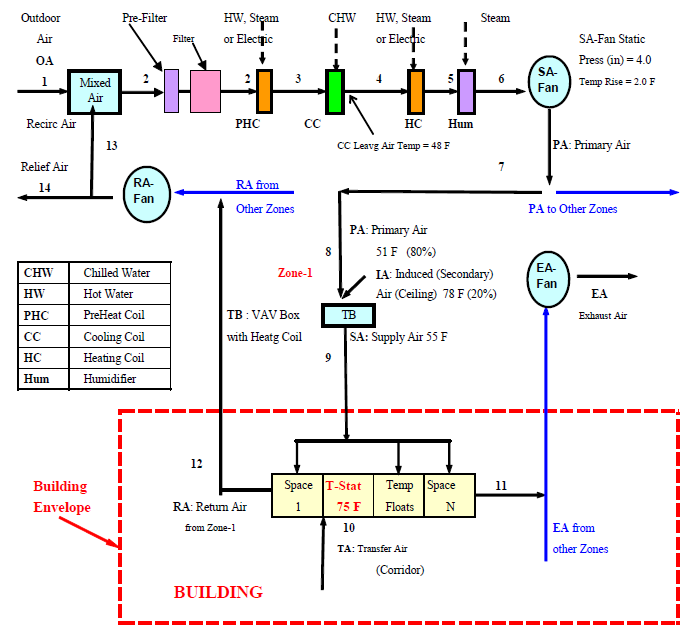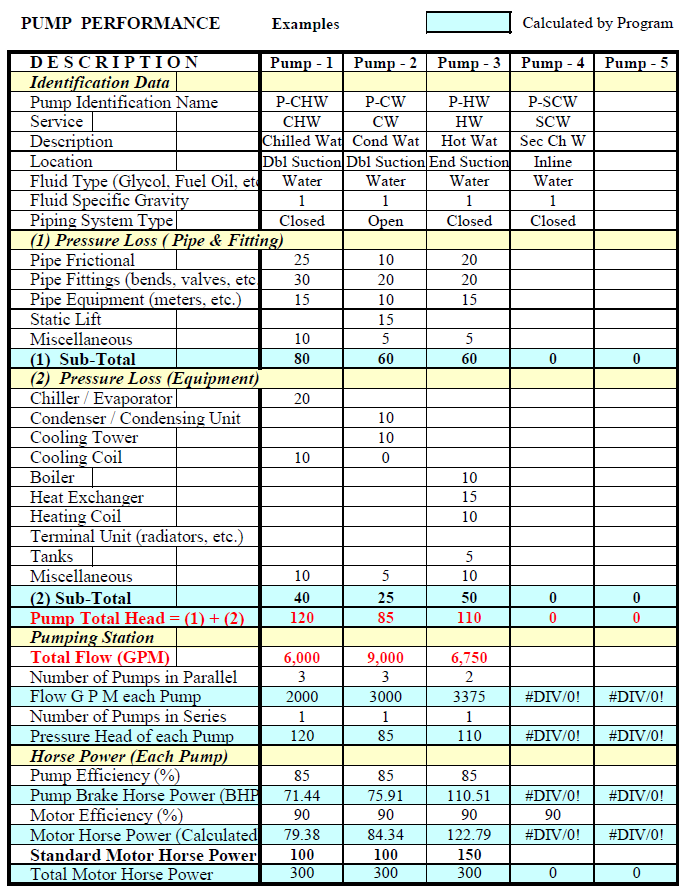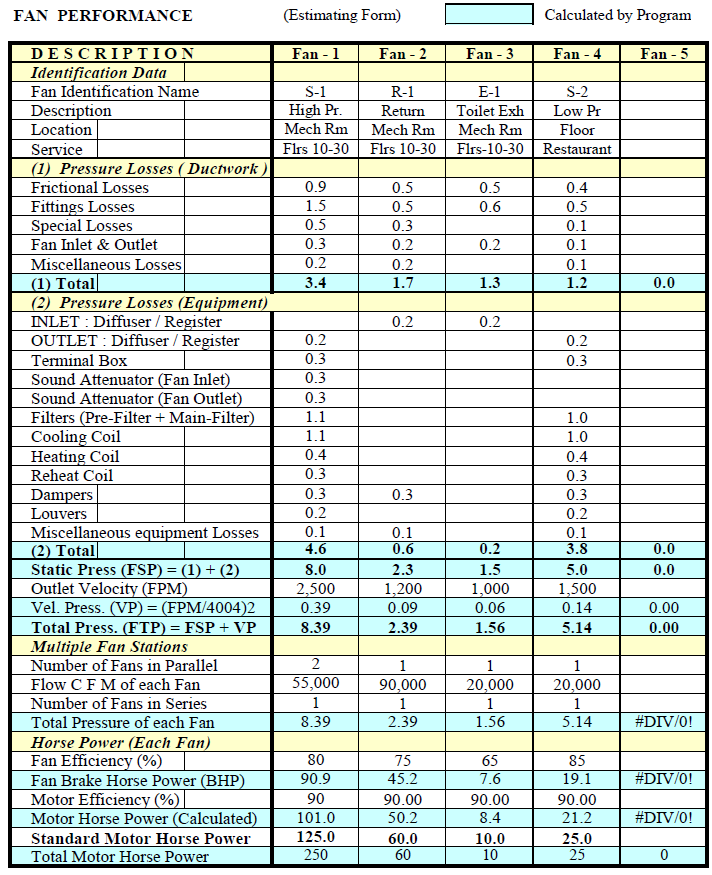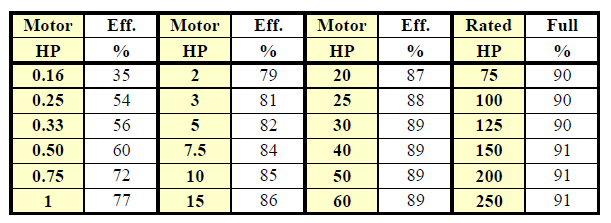Pumps and Fans
In order to move a mass (solids, liquids or gases) you have to apply an external force (energy). Fluids (gases and liquids) can be made to move from say point-A to point-B by creating a difference in pressure between point-A and point-B. The difference in pressure between the two points in the "System" is required to overcome the resistance in the system from (1) friction from ductwork and piping, (2) fittings such as elbows, valves/pipes, dampers/ducts, etc., and (3) equipment such as heating and cooling coils.
Mechanical devices such as fans are used to move gases while pumps are used to move liquids. The mechanical devices are driven by electric motors. (Pumps are sometimes driven by diesel or gas engines as in the case of automobiles).
Fans and pumps are selected so that they will increase the pressure of the fluid flowing through it. The increase in pressure must be sufficient to drive the fluid through the terminal unit or outlet with the greatest pressure difference (or loss in the system up to the terminal or outlet). The quantity of fluid that the fan or pump must move per unit time (CFM or GPM) is the sum (or the simultaneous peak sum) of the fluid required at all the terminals.
Work
Work measurement was established arbitrarily and by tradition in the same way as length, weight, time, heat, temperature and pressure. In I-P units a unit of work is done when 1 lb mass is lifted vertically against gravity through a distance of 1 foot. The unit is called foot-pound (ft-lb). Similarly, when 1 kilogram mass is lifted vertically against gravity through a distance of 1 meter then the work done is 1 kilogram-meter. Work done is Force x Distance.
1 lb weight resting on a surface area of 1 square foot exerts a pressure or force of 1 lb per square foot. Force is pressure per unit area. In the Figure below force, behind a piston, is applied to a gas in a cylinder, moving the cylinder a certain distance and compressing the gas. So work has been done. The Figure shows that the work done is the area under the curve from pressure-volume condition 1 to pressure-volume condition 2. The process is not usually a straight line.

Figure -
Energy
Energy is defined as the ability to do work. As such, energy can exist in many forms such as nuclear, chemical, electrical, fossil fuel, solar, wind and geothermal. The basic forms of energy are potential, kinetic, mechanical, heat, internal, and electrical.
Potential energy is due to position or state. For example a mass raised to some height above a reference level such as the earth's surface can be made to do work by letting it fall. A compressed spring possesses potential energy because it can do work when it is released.
Mechanical energy is possessed by any mass which is in motion. It is also referred to as kinetic energy. Kinetic energy is the energy possessed by a body in motion. Electrical energy is obtained from electrical generators and batteries and consists of the flow of electrons in an electrical circuit.
Heat energy is the result of the kinetic energy possessed by the atoms and molecules which make up the mass. Internal energy of a gas is a function of temperature only and is independent of changes in pressure and volume and the symbol used is U. This is known as Joule's Law.
When one mass loses X btu of heat then the heat content of other masses must increase by the same X btu. There is no such thing as heat or any form of energy just disappearing into nothing. Energy is transferred from one object to another or just stays where it is.
Energy can be converted from one form to another. The heat energy from fossil fuel can be converted into mechanical energy to drive turbines. The mechanical energy of turbines can be converted to electrical energy using generators. Electrical energy can be converted to mechanical energy using motors or converted to heat energy as in the case of resistance heaters.
Power
The same amount of work can be done over different time periods. Moving 1000 lbs through a distance of 1000 feet in 100 hours is not the same as moving the same 1000 lbs through the same distance of 1000 feet in 1 hour. Power is defined as work done per unit time or the rate at which work is done.
A unit of work commonly used in I-P units is the Horse-Power (HP) which is defined as 33,000 foot-pounds per minute or 550 foot-pounds per second. This is used in mechanical engineering calculations. The electric HP is equivalent to 33,013.282 ft-bs and boiler HP is 33,472.12 ft-lbs. The metric HP is 32,548.5623 ft-lbs per minute or 542.476 ft-lbs per second.
However the unit of power commonly used in S-I units is the watt which is derived from electrical units. Electrical force (E volts) = Current (I amperes) x Resistance (R ohms) and Power (P watts) = E x I. The watt is a small unit so the term corresponding to HP is Kilowatts (KW) where 1 KW = 1000 watts. 1 KW = 44,253.7 ft-lbs = 1.340483 HP and 1 HP = 0.746 KW.
Pump and Fan Laws of Operation
PUMPS | FANS |
 | |
(1) GPM = Gallons per Minute. CFM = Cubic Feet per Minute. RPM = Revolutions per Minute The flow (gpm or cfm) increases with the RPM of the pump or fan.
(2) H = Pump Pressure Head (feet H2O). P = FTP = Fan Total Pressure (inches H2O) The pressure delivered by the pump increases as the square of the RPM ratio
(3) BHP = Brake Horse Power. This is the mechanical energy required. It depends on the flow (gpm or cfm) and pressure (feet or inches H2O) resistance across which the fluid is moved.
| PUMPS: | Brake Horse Power (BHP) = ( GPM x 8.35 x SPGR x H ) / ( 33,000 x (PE/100) ) |
| FANS: | Brake Horse Power (BHP) = ( CFM x FTP x 5.2 ) / ( 33,000 x (FE/100) ) SPGR = Specific gravity of liquid. PE = Pump Efficiency. FE = Fan Efficiency. |
| MOTORS: | Motor Horse Power (MHP) = BHP / ME. ME = Motor Efficiency |
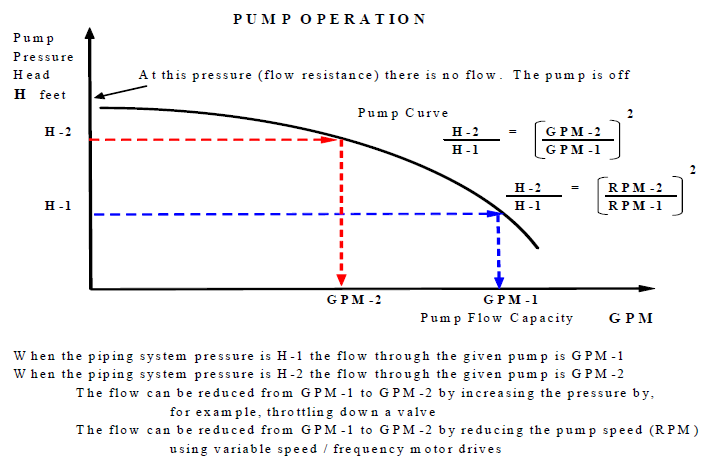

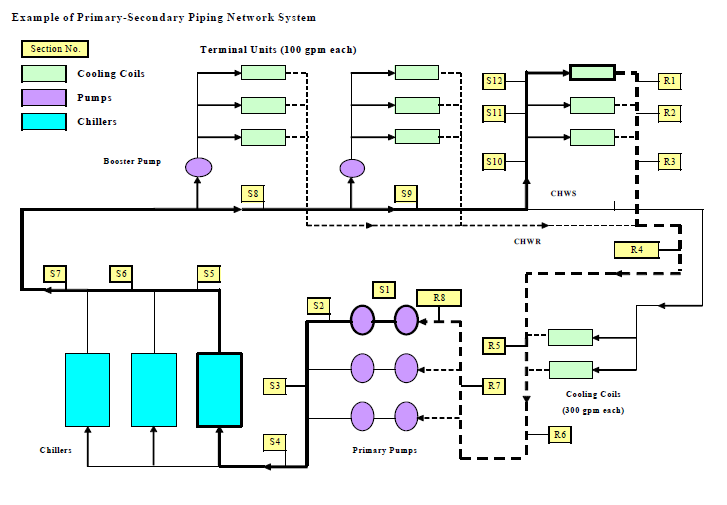
Typical System
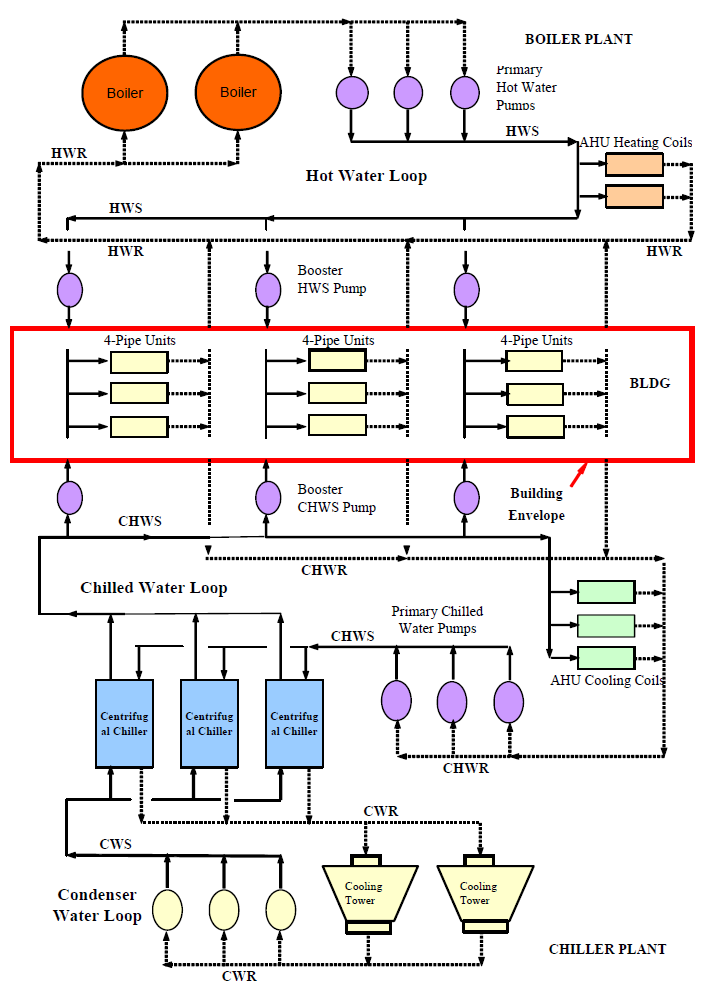
Typical System
